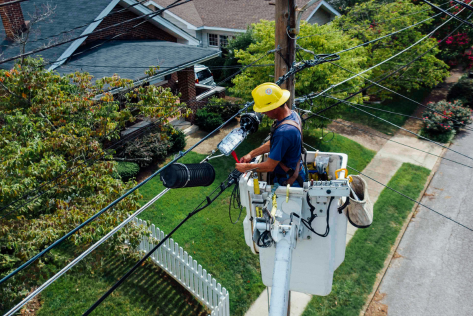Leave It Spotless: Why End of Tenancy Cleaning Matters
Let’s face it – moving out of a rental property is no small job. The packing, hauling, not to mention the emotional toll it can take. But with this heady mix of tasks, many tenants tend to overlook one crucial thing – end of tenancy cleaning. Understandably, cleaning may not seem as pressing as safely moving your valuables, but ignoring this duty can result in financial implications like losing part or all of your deposit.
Importance of End of Tenancy Cleaning
So why exactly does the end of tenancy cleaning matter? Above all else, it’s usually a requirement stated distinctly in most tenancy agreements. Failing to meet these stipulated cleanliness standards can lead to deduction from your initial deposit by landlords or letting agencies.
Beyond your legal obligations, end of tenancy cleaning also helps maintain good relationships between you and your landlord, which can be beneficial for future reference purposes. Imagine the impression you’ll leave behind if you make sure their property looks as good, if not better than when you first moved in.
Moreover, good overall hygiene cannot be overstressed. Deep cleaning before moving out ensures that nasties like mold or pests do not get left behind for the next tenant. This cleanliness contributes not only to a healthy living environment but also boosts home maintenance in the long run.
Last but not least, considering our responsibility towards our planet, maintaining excellent cleanliness habits aids in the preservation and sustainability of our environment.
The Checklist for End of Tenancy Cleaning
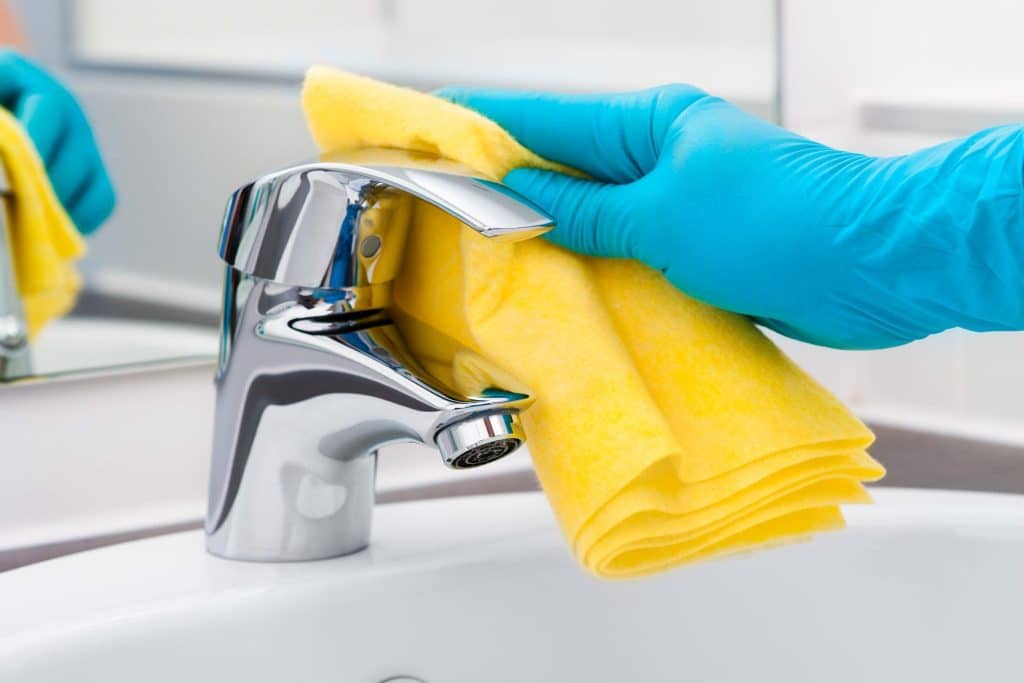
So what should an effective end of tenancy cleaning checklist entail? That depends on numerous factors, including the size and type of your property, and specific agreement clauses. However, there are a few universal tasks that hold importance, such as deep cleaned carpets or floors, sparkling windows, and dust-free surfaces.
Bathrooms can be a pain point too. A thorough deep clean should eliminate any traces of limescale or soap scum. The toilet should smell fresh, and all bathroom fixtures should function properly. Nothing screams dirty like a spotted mirror or a grimy toilet bowl!
The kitchen often requires extra attention. Varied tasks will include degreasing the oven, cleaning appliances inside out (like the refrigerator), ensuring cupboards are void of crumbs or spillage marks, and checking that all surfaces are scrubbed to their best possible shine.
In bedrooms and living areas, curtains or blinds need laundering. Walls must be checked for marks and cleaned appropriately. Furniture needs to be dusted, and beds must appear inviting with freshly laundered linen.
Refer to your rights and responsibilities as a tenant regarding cleaning requirements to avoid misunderstandings with your landlords.
Professional VS DIY End of Tenancy Cleaning
Evaluating whether to hire a professional cleaner or do it yourself is another critical decision. Many choose to hire professionals for their specialized skills and because they’re often incredibly efficient.
Professionals abide by an extensive cleaning checklist aligned with industry standards defined by reputable organizations such as The British Institute of Cleaning Science. Their experience frequently means knowledge about what landlords and letting agencies specifically look for during final inspections.
On the flip side, opting for DIY could save you some bucks, provided you have the right equipment and the time and energy to give your rental the deep clean it deserves. However, this option may pose a risk if you miss anything crucial on your cleaning list which could lead to deposit deductions later.
Tips for Efficient End of Tenancy Cleaning
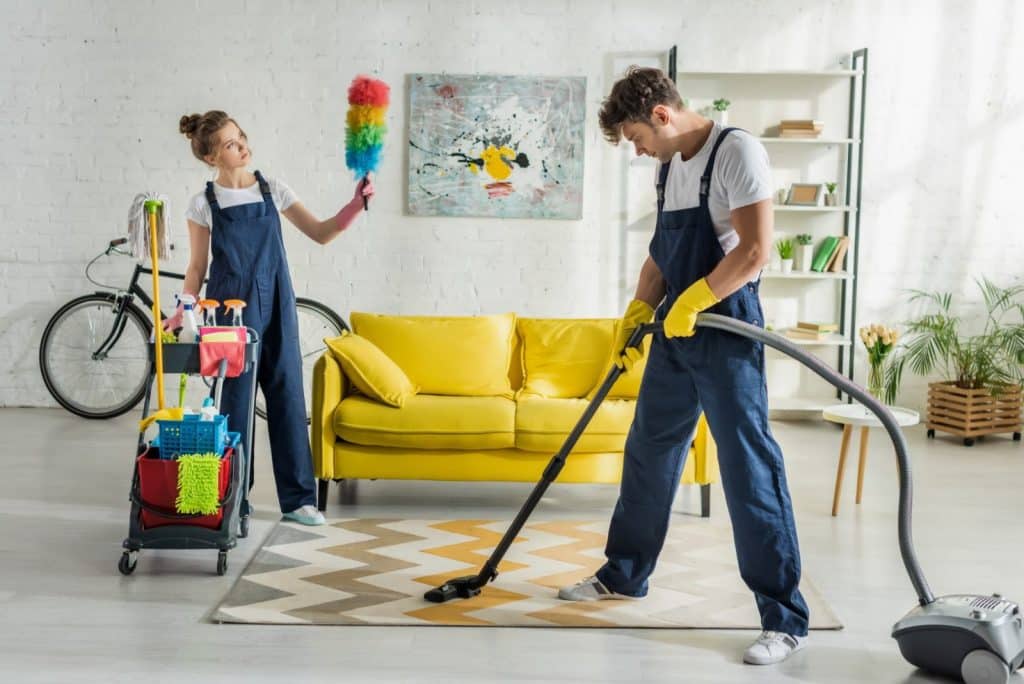
If you choose the DIY route, here are some useful tips that can come in handy. Firstly, tackle one room at a time. This approach ensures complete attention to detail.
Invest in good quality cleaning equipment and supplies to achieve professional-like results. Additionally, make sure you review what exactly your tenancy agreement requires beforehand, and create a checklist that aligns with these requirements.
Start the process a few days or even weeks before moving out. Cleaning is less stressful when not done in haste and this also gives time for repeat cleans wherever necessary. Lastly, always remember to take before and after photos as evidence of your thorough cleaning efforts.
Keeping a Healthy Environment Post-Tenancy
Moving out is more than just deep cleaning… it’s about ensuring you’re not leaving a harmful footprint behind on the environment. Simple acts like responsibly disposing of waste or recycling can significantly contribute to environmental sustainability.
Using eco-friendly products not only aids in your deep cleaning process but indeed helps keep your carbon footprints minimal during your move-out process. Opting for natural alternatives like vinegar, baking soda or lemons can work wonders for certain cleaning tasks.
A nutritious clean environment is also beneficial for the next tenants moving in. Allowing them a happy, healthy start in their new living space can surely bring positive karma back onto you!
Lastly, maintenance shouldn’t stop at deep cleaning alone. Ensuring everything is left functioning properly such as smoke alarms or heating elements further adds to post-tenancy health and safety measures.
End of Tenancy Cleaning: Kitchen Focus
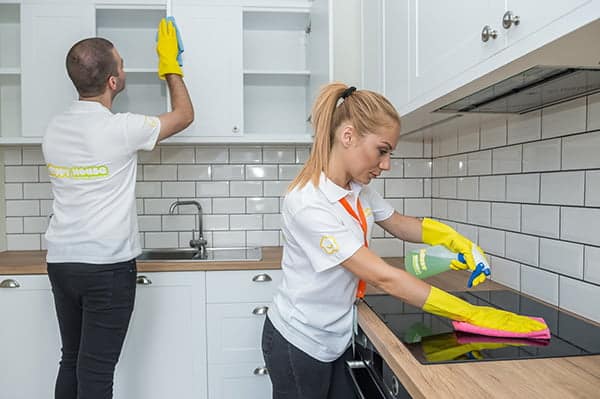
The kitchen is an area that requires special attention during end of tenancy cleaning. This is because it is one of the areas that get frequently used and as such, might have accumulated layers of grease, dirt, and food remnants. Cleaning these requires detailed work to ensure you don’t leave out any part and ultimately risk your deposit.
Firstly, focus on the floors and counters which should be scrubbed until they shine. Attention should also be paid to appliances such as the fridge, dishwasher, microwave, and oven. These should ideally be cleaned from inside out.
Your cupboards and drawers should also not be neglected. Ensure they are entirely empty then proceed to clean them free of crumbs or dirt. Degreasing the hood filter above your stove top is also a necessary step many overlook.
Using harsh chemical cleaners can leave lingering odors or stains. Therefore, consider using natural cleaning alternatives like baking soda and vinegar. They’re eco-friendly, highly effective against tough grease stains and leave your kitchen smelling fresh.
According to The British Institute of Cleaning Science, a standard kitchen deep clean can take anywhere from 1-3 hours for professional cleaners depending upon condition.
End of Tenancy Cleaning: Bathroom Focus
Bathrooms can prove tricky to clean due to moisture-related issues that may cause grime build-up or even mold and mildew. A well-cleaned bathroom speaks volumes about how well you’ve maintained the rest of the property. As such, this room needs meticulous detailing too.
- The basin, faucets and countertops need to be scrubbed thoroughly until they’re free from soap scum or toothpaste marks.
- Similarly, the bathtub, shower enclosure and tiles need degreasing, and all traces of limescale should be removed.
- The toilet should not only be cleaned but also disinfected. Pay special attention to the toilet seat and handle.
Don’t forget to deep clean the mirrors until they’re sparkling. Finally, ensure all the drains are clear and functioning properly. A stuffy bathroom is an instant red flag for any inspection.
Managing Carpets and Upholstery During End of Tenancy Cleaning
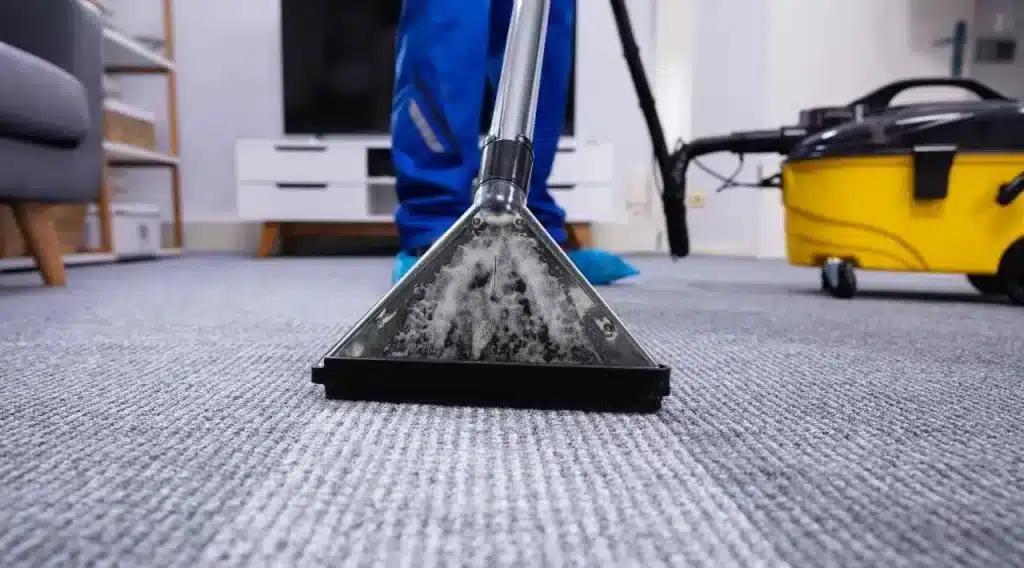
Other crucial areas to cover in your end of tenancy cleaning are your carpets and upholstery. These are notorious for harboring dust, dirt, and bacteria particles, which can seep deep into their fibers over time, leaving unwanted odors and allergies behind.
To handle these effectively, start by vacuuming all your carpets, rugs, sofas and fabric-covered chairs thoroughly. Next, consider deep cleaning with a rented steam cleaner or commercial carpet cleaner if heavy stains or dirt are present.
Ensure all throw pillow covers or removable sofa covers are washed according to fabric instructions. Curtains also need laundering or at least thorough vacuuming.
Cost Breakdown: End of Tenancy Cleaning
Weighing up whether to hire a professional cleaner or do it yourself? Cost is an influencing factor. Professional cleaning services have set packages for end of tenancy cleaning which range depending on property size, condition and the services included. However, most guarantee deposits return upon their standards being met.
On the other hand, doing it yourself primarily costs you in terms of effort and time. You will have minor outlays for cleaning supplies and perhaps carpet steam cleaning. Remember, this is only a cheaper alternative if no reprising after inspections due to overlooked items take place.
Keep in mind, a clean property is easier to rent or sell, therefore consider this as an investment towards your future letting ventures as well.
Ensuring Deposit Return with End of Tenancy Cleaning
Getting your deposit back largely depends on how well you’ve maintained the property throughout your tenancy. A thorough deep clean can significantly increase your chances of securing your full deposit refund.
Prioritizing the kitchen and bathroom is crucial in making a good impression but so are less commonly thought-of areas such as window ledges, the insides of cupboards, light fixtures, grouting or door handles. These are exactly the kind of spots where dust can settle undetected over time and cause issues during inspections.
The garden (if any) may also need attending to. Overgrown weeds or leaves on pathways can sometimes lead to deductions from deposits. Finally, remember that end of tenancy doesn’t mean end of responsibility. Ensure all utilities are functioning correctly as they fall under your responsibilities as a tenant.
Wrap Up
End of tenancy cleaning goes beyond helping you get your deposit back. It’s about maintaining positive relationships with landlords, contributing to environmental sustainability and ensuring a healthy living environment for future occupants.
By taking one room at a time, investing in quality cleaning supplies and maintaining a detailed checklist of areas to cover, you can make this otherwise daunting task manageable. Remember, your precedent might just pave a healthier way for your successors.


